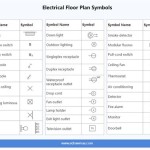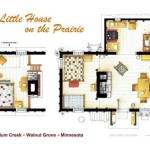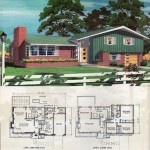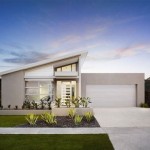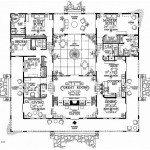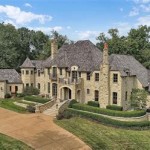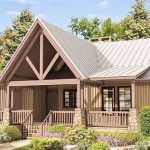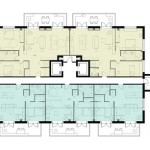20x30 House Plan South Facing: Optimizing Sunlight and Space
A 20x30 house plan offers a compact yet comfortable living space, and a south-facing orientation can significantly enhance its energy efficiency and overall livability. This article explores the advantages of a south-facing 20x30 house plan and provides key considerations for maximizing its potential.
Benefits of a South-Facing House
South-facing homes are prized for their ability to capture maximum sunlight, particularly in the northern hemisphere. This orientation offers several advantages:
*
Passive Solar Heating:
South-facing windows allow ample sunlight to enter the home during the winter months, naturally warming the interior and reducing reliance on artificial heating systems. *Natural Light:
Increased natural light brightens the living space, creates a more welcoming ambiance, and reduces the need for artificial lighting during the day. *Energy Efficiency:
By maximizing solar gain in the winter and minimizing it in the summer, a south-facing home can significantly reduce energy consumption. *Solar Panel Optimization:
South-facing roofs are ideal for solar panel installation, allowing for maximum energy generation throughout the day. *Enhanced Ventilation:
Strategic placement of windows and doors can facilitate natural cross-ventilation, keeping the home cool during warmer months.Key Considerations for a 20x30 South-Facing House Plan
Designing a 20x30 south-facing home requires careful planning to optimize space and leverage the benefits of the orientation. Here are some key considerations:
*
Window Placement:
Large windows on the south facade maximize solar gain. Consider using high-performance windows with low-E coatings to minimize heat loss in the winter and heat gain in the summer. *Roof Overhangs:
Well-designed roof overhangs can shade south-facing windows during the summer months, preventing overheating while still allowing sunlight to penetrate during the winter. *Insulation:
Proper insulation in walls, roofs, and floors is crucial for maintaining a comfortable temperature and maximizing energy efficiency. *Thermal Mass:
Incorporating thermal mass materials, such as concrete or brick, can help regulate indoor temperatures by absorbing and releasing heat.Optimizing Space in a 20x30 House
While 600 square feet provides a comfortable living space, careful planning is essential to maximize functionality and avoid a cramped feel. Consider these space-saving strategies:
*
Open Floor Plan:
An open floor plan can create a sense of spaciousness by combining living, dining, and kitchen areas. *Multi-Functional Furniture:
Utilizing furniture with built-in storage or that serves multiple purposes can help save space. *Vertical Space:
Make the most of vertical space with tall cabinets, shelves, and lofted beds. *Minimalist Design:
Adopting a minimalist design approach can help reduce clutter and create a more open and airy feel.Landscaping Considerations for a South-Facing Home
Landscaping plays a crucial role in enhancing the comfort and energy efficiency of a south-facing home. Here are some landscaping tips:
*
Deciduous Trees:
Planting deciduous trees on the south side can provide shade in the summer while allowing sunlight to penetrate in the winter. *Shade Structures:
Pergolas, awnings, or trellises can provide additional shade during the hottest months. *Ground Cover:
Using light-colored ground cover, such as gravel or light-colored paving, can reflect sunlight and reduce heat absorption around the house. *Drought-Tolerant Plants:
Consider using drought-tolerant plants to minimize water usage and maintenance.Climate Considerations
While south-facing homes offer numerous benefits, climate plays a crucial role in their effectiveness. Consider these climate-specific adaptations:
*
Hot Climates:
In hot climates, prioritize shading strategies, such as roof overhangs, awnings, and strategically planted trees, to prevent overheating. *Cold Climates:
In cold climates, maximizing solar gain through large south-facing windows and incorporating thermal mass can help reduce heating costs. *Temperate Climates:
Temperate climates benefit from a balanced approach, maximizing solar gain in the winter and providing adequate shading in the summer.Building Materials and Construction Techniques
The choice of building materials and construction techniques can significantly impact the energy efficiency and durability of a 20x30 south-facing home. Consider these factors:
*
Insulated Concrete Forms (ICFs):
ICFs provide excellent insulation and thermal mass, contributing to energy efficiency and temperature stability. *Structurally Insulated Panels (SIPs):
SIPs offer high insulation values and airtight construction, minimizing energy loss. *High-Performance Windows:
Invest in high-performance windows with low-E coatings and insulated frames to reduce heat transfer. *Air Sealing:
Proper air sealing is crucial for preventing drafts and minimizing energy loss.Local Regulations and Building Codes
Before embarking on any construction project, it's essential to research and comply with local regulations and building codes. These regulations may dictate setbacks, building height restrictions, and energy efficiency requirements.
*
Setbacks:
Local regulations may specify minimum distances between the house and property lines. *Height Restrictions:
Building codes may limit the height of the structure. *Energy Efficiency Requirements:
Many jurisdictions have adopted energy efficiency standards for new construction.
20x30 South Facing House Plan Map Studio

20 X30 South Facing House Plan With Parking Ll Vastu 2bhk Llघर क नक श Plans 20x30

20 30 South Face House Plan Map Naksha 20x40 Plans Facing

20x30 South Facing Home Plan House And Designs Books

20x30 Duplex House Plans South Facing 2bhk Dupplex Design Plan

20 30 Duplex House Plans South Facing Best 3bhk

20 By 30 N House Plans Best 1bhk 2bhk

20x30 South Facing 2bhk House Plan With Car Parking According To Vastu Legends Design World

30x20 South Face Vastu Home Plan House And Designs Books

20 X30 South Face House Plan 20x30 Plans Facing

